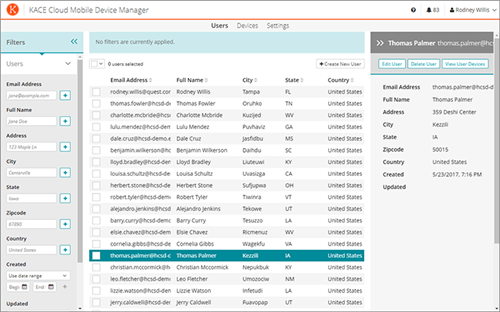Most IT administrators feel that they spend their time herding cats no matter what they’re working on, but endpoint management seems to make the herding even harder and the cats even more elusive.
For one thing, not all cats are the same. You’ve got domestic cats like tabbies, calicos, Persians, Siamese and angoras. But then there are bobcats, ocelots and lynxes. Then prairie cats like wildcats, jaguarundi and pumas. And the ones you don’t want to mess with, like tigers, lions, leopards and cheetahs.
About the only thing they have in common is that somebody somewhere has used them in a video.
Herding your endpoint cats
Can you imagine how much work it took to unify more than three dozen species and decide what is and is not a cat? IT administrators digging into their expanding endpoint environment are up against the same thing, identifying all the different types of network-attached devices, locating them on the network and figuring out how to manage and secure them.
If they can.
You want to be able to manage, to some extent, every user device that touches your network. That used to mean desktop computers and laptops, which you could sometimes manage with ad hoc solutions. But then “user devices” came to include Chromebooks, tablets and smartphones, not to mention printers, servers and other network-attached devices. So that meant you had to start bouncing among disparate tools to manage all of the devices, platforms and operating systems on your network.
And now, as you move to IoT, “user devices” has begun to include sensors and voice-controlled speakers. Remote connectivity pushes the definition even further, to kiosks, thermostats, wearables, point-of-sale devices, digital signage and vending machines.
That’s a lot of cat species to herd. Yet your job is to maintain network security and keep noncompliant devices from wreaking havoc, and you’d prefer to do it with a single tool.
The ultimate cat-herder: Unified endpoint management
We’ve released a paper called Managing All Devices the Same Way with Unified Endpoint Management (UEM). It explores the process of shifting from a box of disparate, ad hoc tools to unified endpoint management as the volume and diversity of your connected endpoints grow.
Here’s what it looks like when all of your devices show up in one place:
With the KACE suite of solutions, including KACE Systems Management Appliance (SMA), you can get a complete view of your multi-platform endpoint environment from a single solution and rest assured that nothing has fallen through the cracks.
In addition, with KACE Cloud Mobile Device Manager (MDM), you get similarly detailed information about the users of mobile devices:
Do you want to keep herding cats or hit the trail to UEM?
Whatever you’re using to manage all your devices now, it’s almost certainly not a single tool. Client management and mobile management products have evolved separately, forcing admins to manage each category of devices differently. UEM is your best hope for seeing everything in a single tool and keeping your sanity.
Download our new paper, Managing All Devices the Same Way with Unified Endpoint Management (UEM) for a new perspective. We describe the three waves of evolution: Wave 1, separate processes with separate products; Wave 2, separate processes with a single product; and Wave 3, same processes with a single product.
The time is right for you to hit the trail to UEM and leave your cat-herding days behind you.




